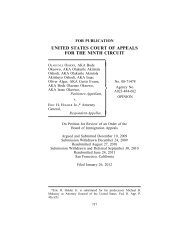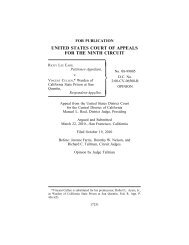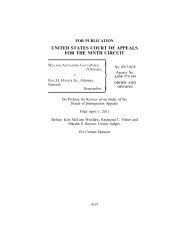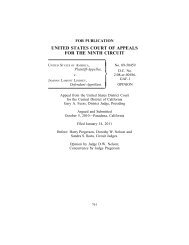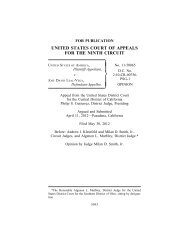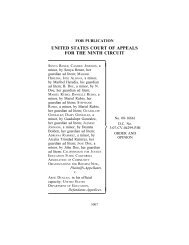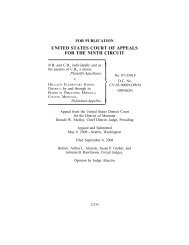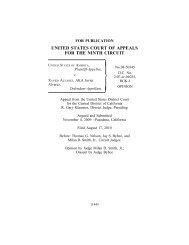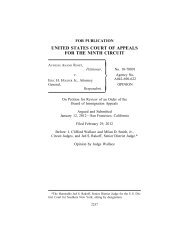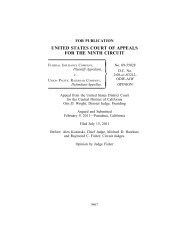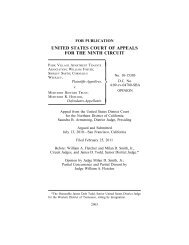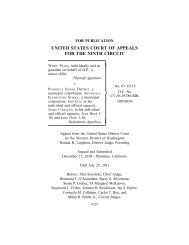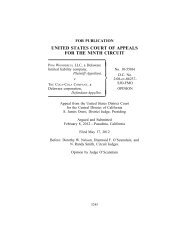kristin rossum v. deborah patrick - Ninth Circuit Court of Appeals
kristin rossum v. deborah patrick - Ninth Circuit Court of Appeals
kristin rossum v. deborah patrick - Ninth Circuit Court of Appeals
You also want an ePaper? Increase the reach of your titles
YUMPU automatically turns print PDFs into web optimized ePapers that Google loves.
17396 ROSSUM v. PATRICK<br />
direct review at all levels. After the final denial <strong>of</strong> relief, Rossum,<br />
represented by new counsel, filed a habeas petition<br />
before the California Supreme <strong>Court</strong>, raising the same issues<br />
as the instant petition, presenting the same expert declaration<br />
and seeking the same relief, an evidentiary hearing. It was<br />
summarily denied. The federal district court, adopting the recommendations<br />
<strong>of</strong> the magistrate judge, followed suit, rejecting<br />
Rossum’s petition.<br />
In Rossum v. Patrick, 622 F.3d 1262 (9th Cir. 2010) (withdrawn),<br />
we reversed. Since the state habeas decision was a<br />
summary denial, we reviewed the decision de novo. Based on<br />
the four corners <strong>of</strong> the state trial and habeas record, we found<br />
that Rossum had made a strong showing that her lawyer’s performance<br />
was deficient under the first prong <strong>of</strong> Strickland v.<br />
Washington, 466 U.S. 668 (1984), and that the state court’s<br />
contrary determination was unreasonable. We remanded for<br />
an evidentiary hearing, focused on the question <strong>of</strong> whether<br />
Rossum was prejudiced by counsel’s deficient performance.<br />
Respondent moved for a rehearing initially on the scope <strong>of</strong> the<br />
remand, but subsequently, based on Richter and Pinholster.<br />
The case against Rossum hinged in large measure on toxicological<br />
and medical evidence which was equivocal. The<br />
fentanyl levels in de Villers’s autopsy samples were extraordinarily,<br />
even unnaturally, high. And while these elevated levels<br />
suggested that death was immediate, they were at odds with<br />
medical evidence which indicated that de Villers lingered for<br />
several hours before he died. There was also a plausible alternative<br />
theory <strong>of</strong> death, accidental overdose <strong>of</strong> cold medicines<br />
and oxycodone. A conceded lapse in the chain <strong>of</strong> custody <strong>of</strong><br />
de Villers’s autopsy specimens raised the not insubstantial<br />
chance <strong>of</strong> contamination, that is, that the fentanyl was added<br />
to the samples after de Villers’s death. Both Rossum and her<br />
lover worked at the San Diego County Office <strong>of</strong> the Medical<br />
Examiner (OME), which ordinarily would have performed the<br />
toxicological analysis. While the OME was sufficiently concerned<br />
about the possibility <strong>of</strong> a conflict <strong>of</strong> interest to send the



